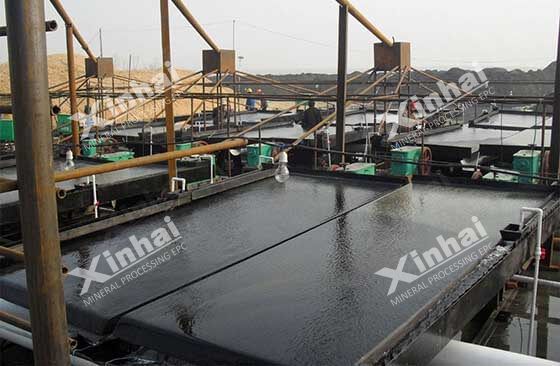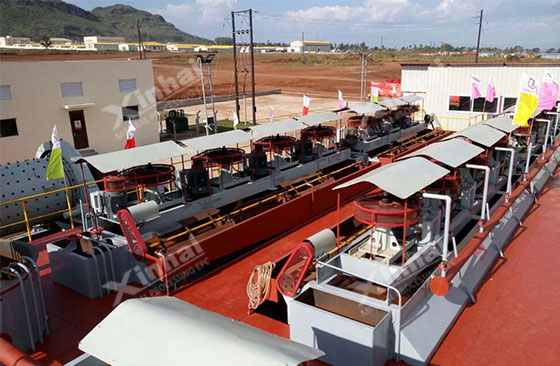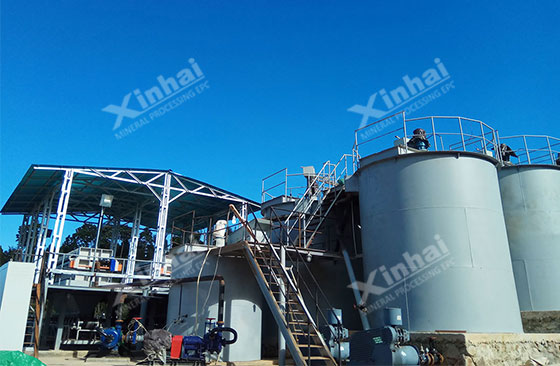

Warm Tip: If you want to know more details about equipment, solutions, etc, please click the button below for free consultation, or leave your requirements!
Kaolin is a clay mineral with nearly white color commonly found in nature, it is useful for making white pigments. Whiteness is the main performance parameter that affects the value of kaolin. Kaolin often contains harmful impurities such as iron, organic matter, dark substances, etc. These harmful impurities will make kaolin show different colors and affect its whiteness. Therefore, impurities must be removed.
The processing of raw kaolin ore depends on the nature of the raw ore and the end use of the product.
There are two kinds of processes applied in industrial production: dry process and wet process, usually hard kaolin is produced by dry process, and soft kaolin is produced by wet process.
Dry process is a simple and economical processing technology. After the mined raw ore is crushed to 25.4mm by the hammer crusher, it is fed into the cage crusher to reduce the particle size to 6.35mm. The hot air in the cage crusher reduces the moisture of the kaolin from 20% to 10% or so. The crushed ore is further ground by an air-blown raymond mill equipped with a centrifugal separator and a cyclone. This process can remove most of the sand and gravel, and the product is usually used as a low-cost filler in the rubber, plastic and paper industries. When used in the paper industry, the product can be used as filler with the ash content less than 10% or 12%, and the brightness is not required at this time.
When using the dry method, if we have high requirements on the whiteness of the product, it is necessary to remove iron for the products produced by the raymond mill.
The advantage of the dry process is that it can save the dehydration and drying process of the product, reduce the loss of ash powder, the process flow is short, the production cost is low, and it is suitable for arid and water-deficient areas. However, to obtain high-purity and high-quality kaolin, we must rely on the wet process.
The wet process includes three stages: ore preparation, beneficiation and product processing.
The preparation phase includes operations such as batching, crushing and mashing. The mashing is to mix the kaolin ore with water and dispersant in the mashing machine to make pulp. The mashing operation can disperse the raw ore, prepare the kaolin ore slurry of appropriate fineness for the separating operation, and remove the large-grained sand at the same time.
The beneficiation stage may include operations such as hydraulic classification, gravity separation, flotation, selective flocculation, magnetic separation, chemical treatment (bleaching) to remove different impurities.
The prepared pulp is first de-sanded by a rake-type washing box, a floating tank classifier or a hydrocyclone, and then it is divided into two grades of coarse and fine by continuous centrifuge, hydrocyclone, hydraulic separator or vibrating fine screen (325 mesh).
The gravity separation method mainly uses the density difference between gangue mineral and kaolin mineral to remove the high-density impurities of light organic matter, quartz, feldspar and elements containing iron, titanium and manganese, so as to reduce the influence of impurities on the whiteness.
Centrifugal concentrators are usually used to remove high-density impurities. The hydrocyclone group can also be used to do the washing and screening of kaolin mineral in the process of separation, which can not only achieve the purpose of washing and grading, but also remove some impurities.
However, it is difficult to obtain qualified kaolin mineral products by only gravity separation method, and the final qualified products must be obtained by magnetic separation, flotation, calcination and other methods.

Almost all kaolin minerals contain a small amount of iron ore, generally 0.5-3%, mainly magnetite, ilmenite, siderite, pyrite and other colored impurities.
Magnetic separation mainly uses the magnetic difference between gangue mineral and kaolin mineral to remove these colored impurities.
For magnetite, ilmenite and other strong magnetic minerals or iron filings mixed in the processing process, using the magnetic separation method to separate kaolin mineral is more effective.
For weak magnetic minerals, there are two main methods: one is to roast first, make the gangue mineral become a strong magnetic iron oxide mineral, then carry on the magnetic separation. The other way is to use a high gradient magnetic field magnetic separation method for magnetic separation.
Magnetic separation does not use chemical reagents, the environment will be polluted, so it is widely used in the process of non - metallic mineral. The magnetic separation method has effectively solved the problem of the exploitation and utilization of the low-grade kaolin mineral which is not of commercial mining value due to the high content of iron ore.
However, it is difficult to obtain high-grade kaolin products by magnetic separation alone, and chemical treatment and other processes are needed to further reduce the content of iron in kaolin products.
The flotation method mainly uses the physical and chemical differences between gangue minerals and kaolin mineral to treat the raw kaolin mineral with more impurities and lower whiteness, and remove the impurities including iron, titanium and carbon, so as to realize the comprehensive utilization of low-grade kaolin mineral resources
Kaolin mineral is a typical clay mineral. Impurities such as iron and titanium are often embedded in kaolin particles, so the raw ore must be ground to a certain degree of fineness. Kaolin’s commonly used flotation methods are ultra-fine particle flotation method, double fluid layer flotation method and selective flocculation flotation method, etc.
Flotation can effectively increase the whiteness of kaolin, while the disadvantage is that it needs chemical reagents and costs a lot, easily to cause pollution.

Chemical leaching: some impurities in kaolin mineral can be selectively dissolved by sulfuric acid, hydrochloric acid, nitric acid and other leaching agents to remove impurities. This method can be used to remove hematite, limonite and siderite from low grade kaolin mineral.
Chemical bleaching: the impurities in kaolin mineral can be oxidized into soluble substances through bleaching, which can be washed and removed to improve the whiteness of kaolin products.
However, chemical bleaching is relatively expensive and is usually used in kaolin concentrate, which needs further purification after beneficiation.
Roasting purification: the difference in chemical composition and reactivity between impurities and kaolin mineral can be used for magnetization roasting, high-temperature roasting or chlorination roasting to remove impurities such as iron, carbon and sulfide in kaolin mineral. This method can improve the chemical reactivity of calcined products, greatly improve the whiteness of kaolin, and obtain high-grade kaolin products.
But the disadvantage of roasting purification is that the energy consumption is large, easy to cause environmental pollution.

The final product without selection is low in brightness, and high-brightness clay products can only be obtained by gravity separation, magnetic separation, flotation or chemical treatment in the process. However, these independent operations all have their own advantages and disadvantages, so the industry usually adopts a combined process of two to three of these processes so that resources can be comprehensively utilized.
Therefore, in actual production, you could choose a qualified mineral processing equipment manufacturer and carry out mineral processing experiment to choose multiple processing technologies to increase the quality of kaolin mineral.
1How to Process Kaolin?
 0
0
 3512
3512
24 Common Barite Beneficiation Methods
 1
1
 4579
4579
3What Are the Common Nickel Mineral Processing Technologies?
 3
3
 4368
4368


What Are the Differences Between CIP and CIL?
 11247
11247
 0
0